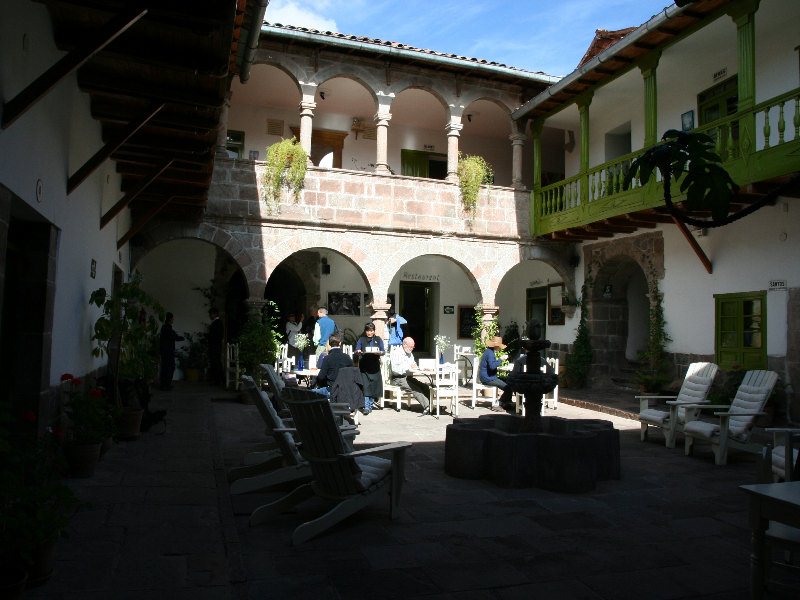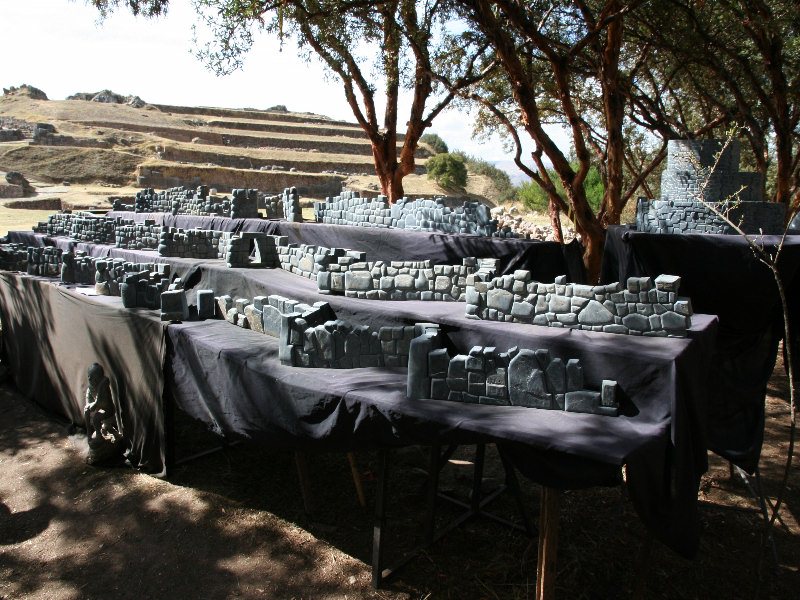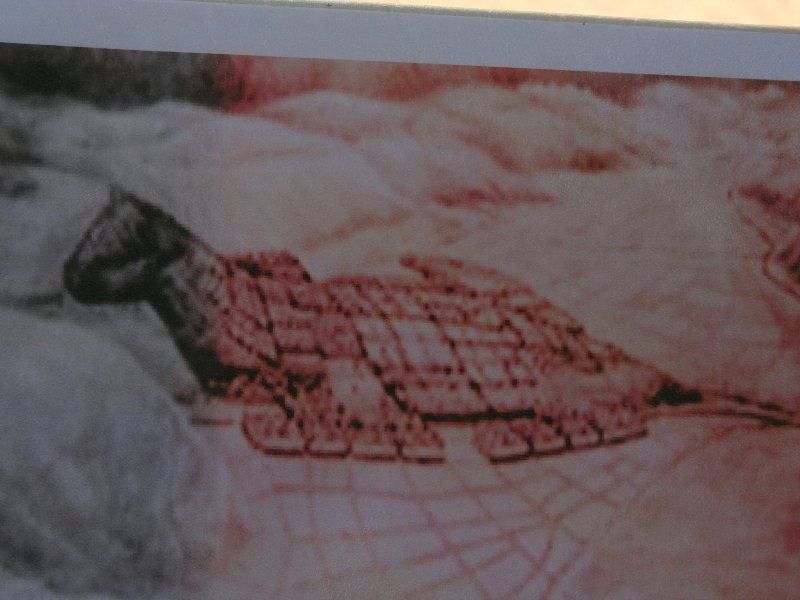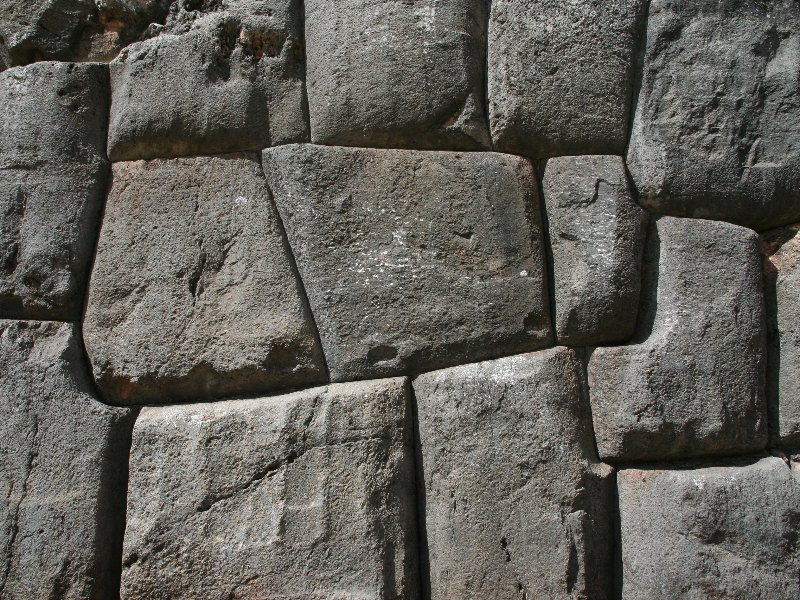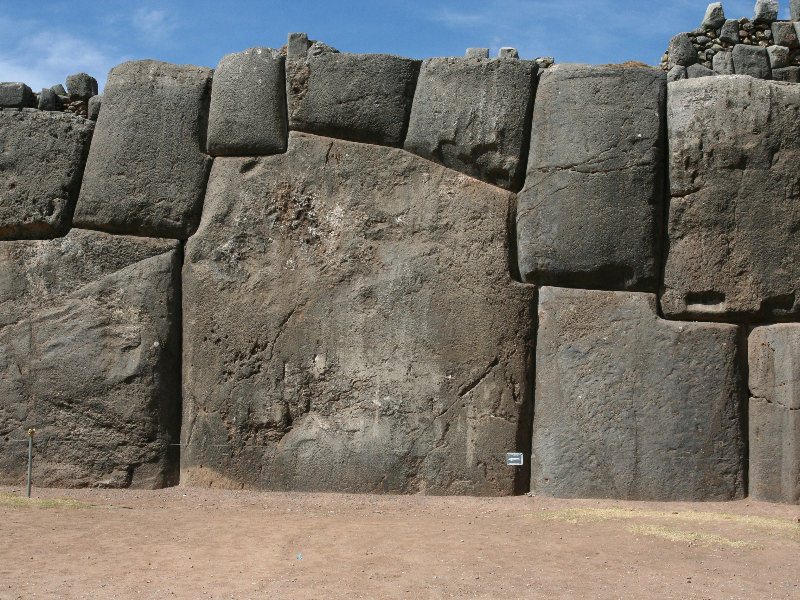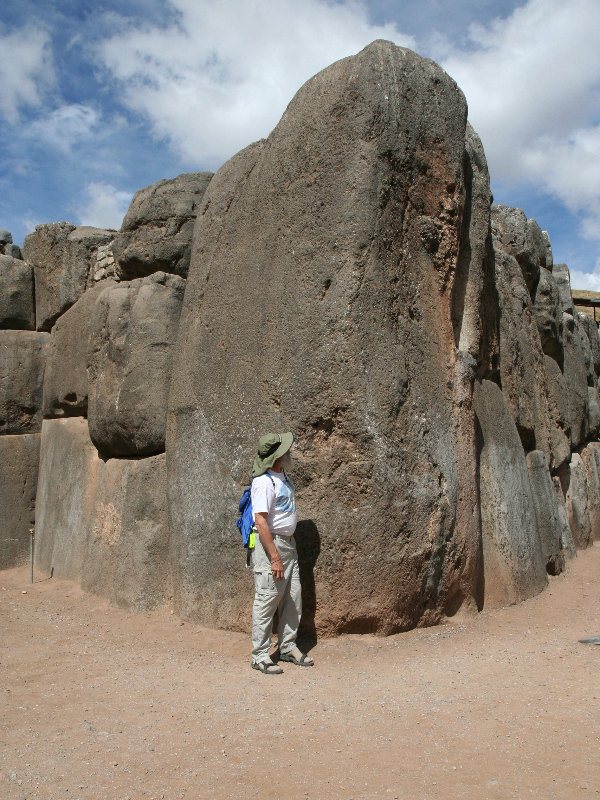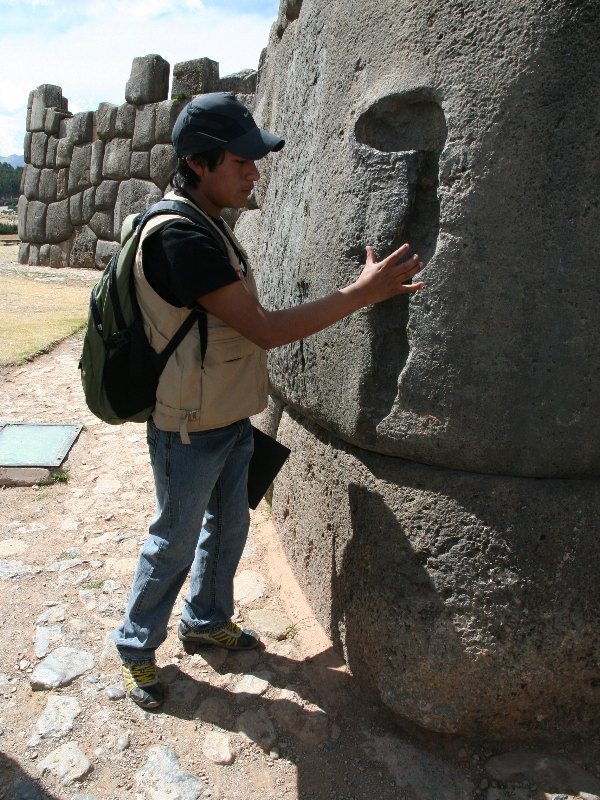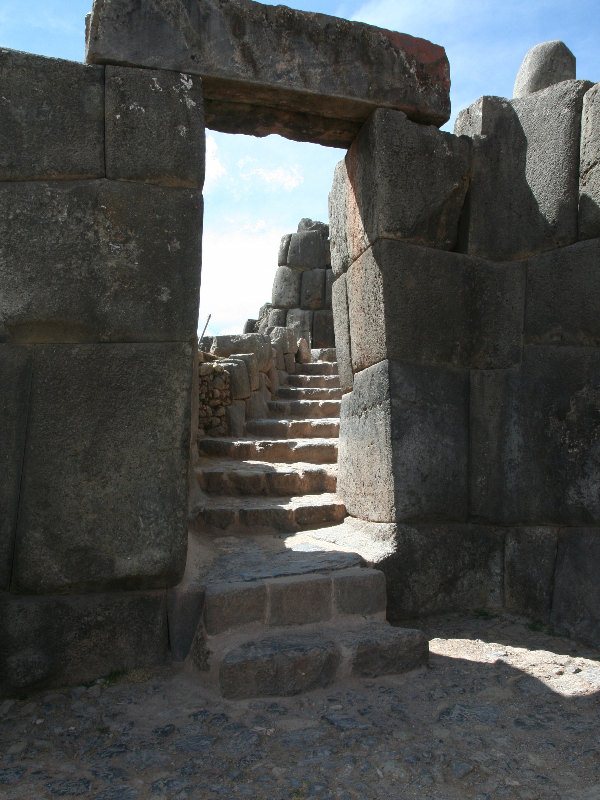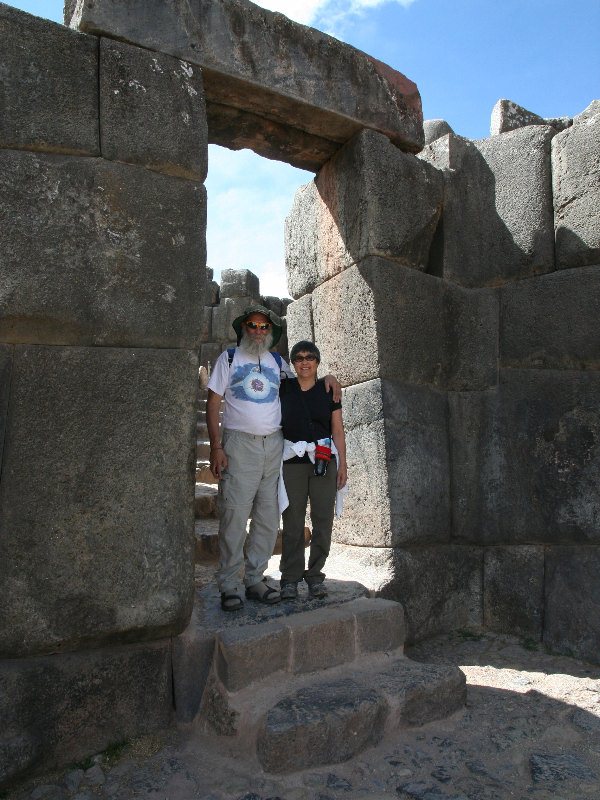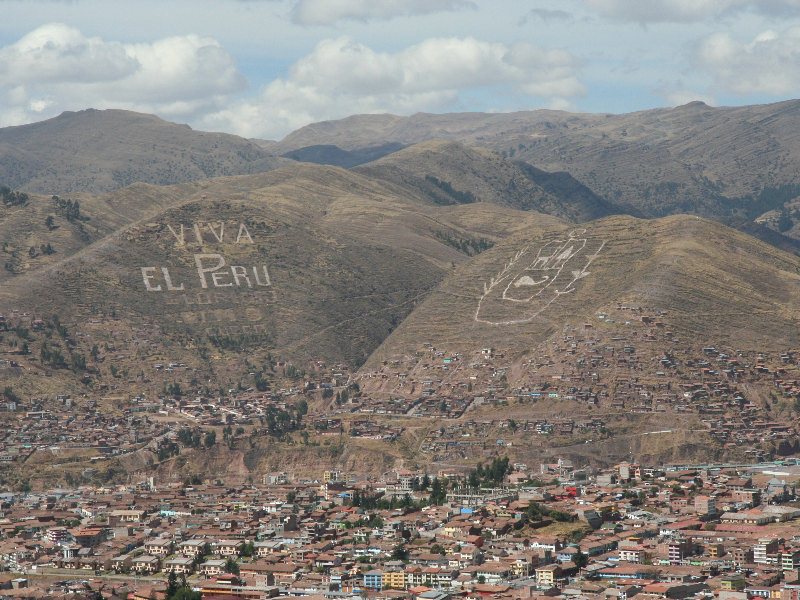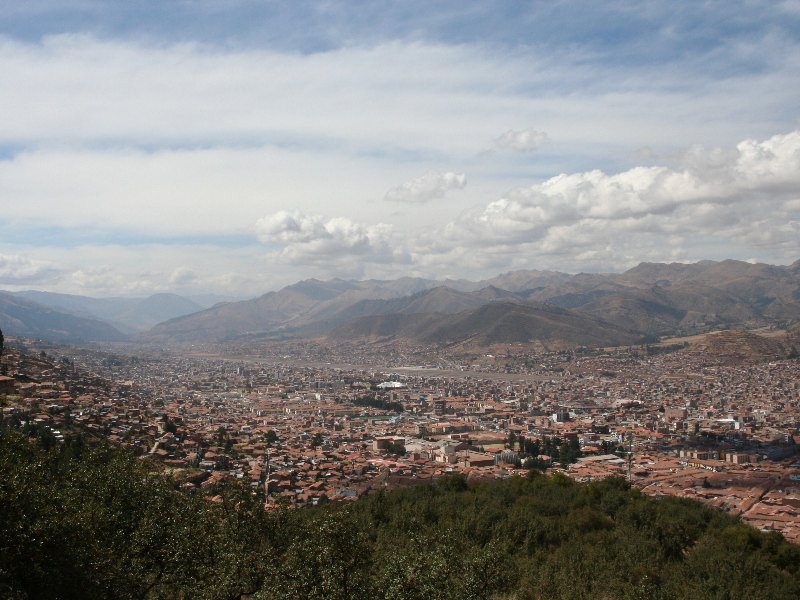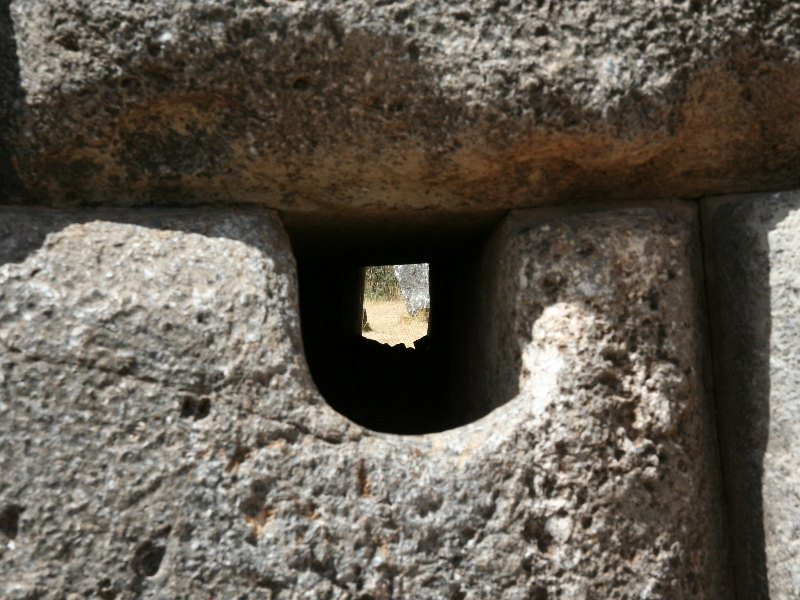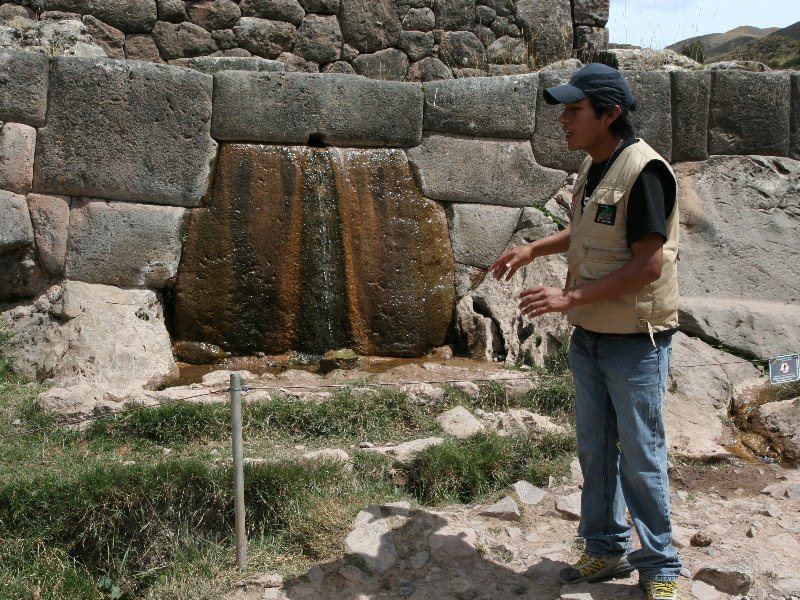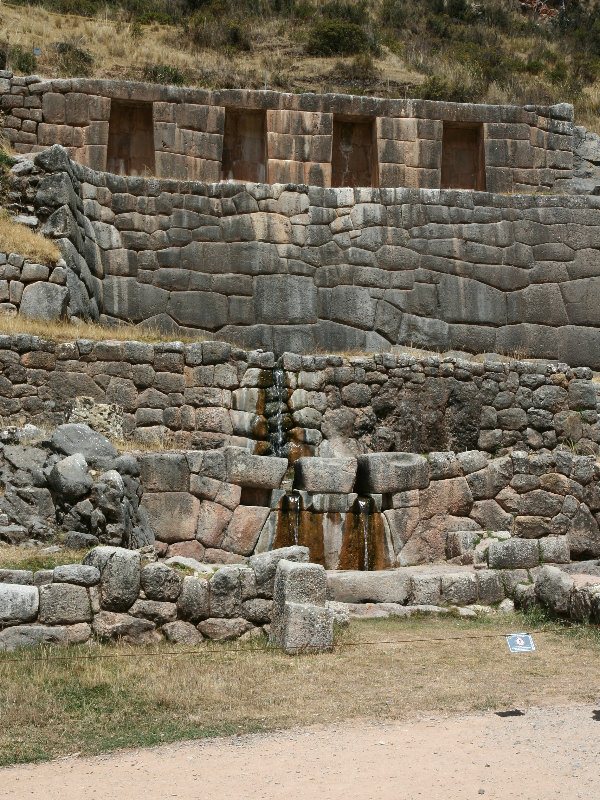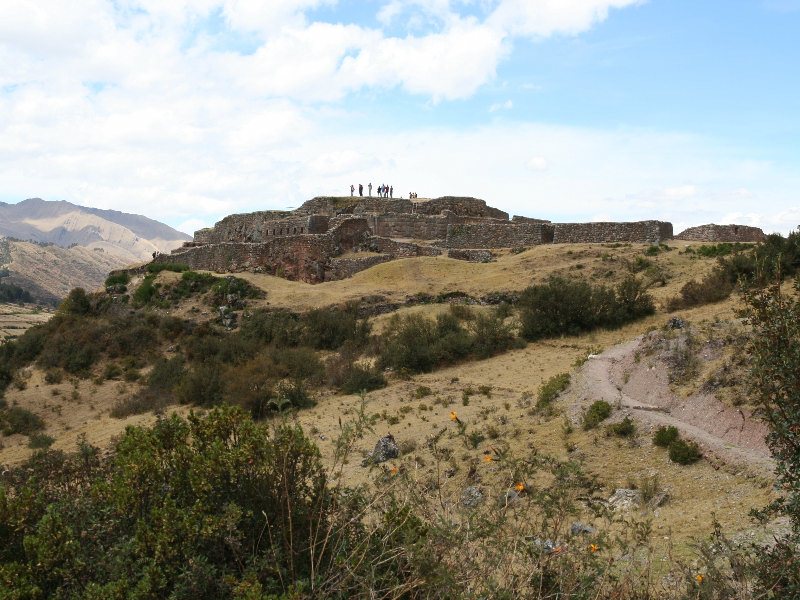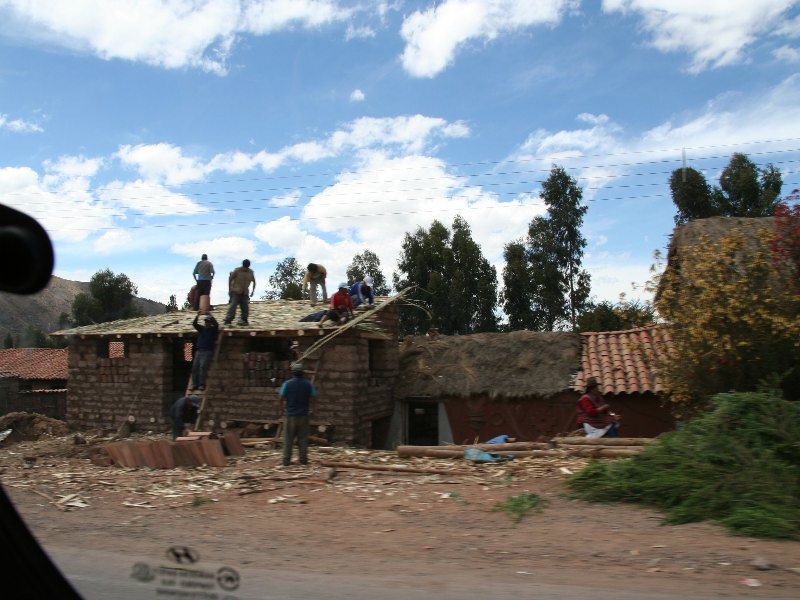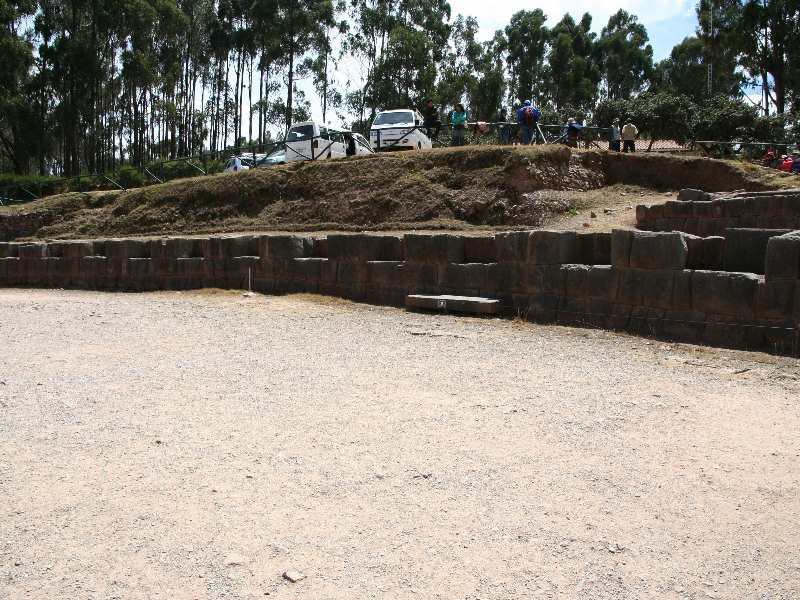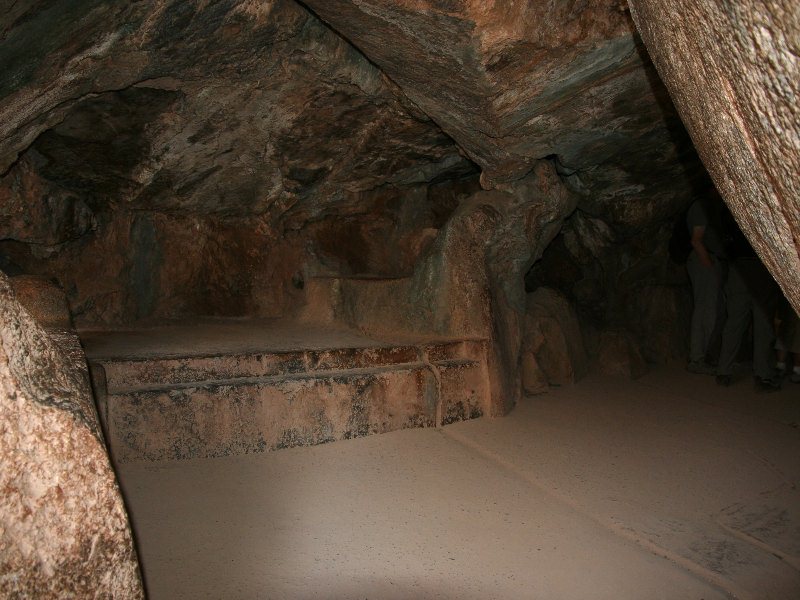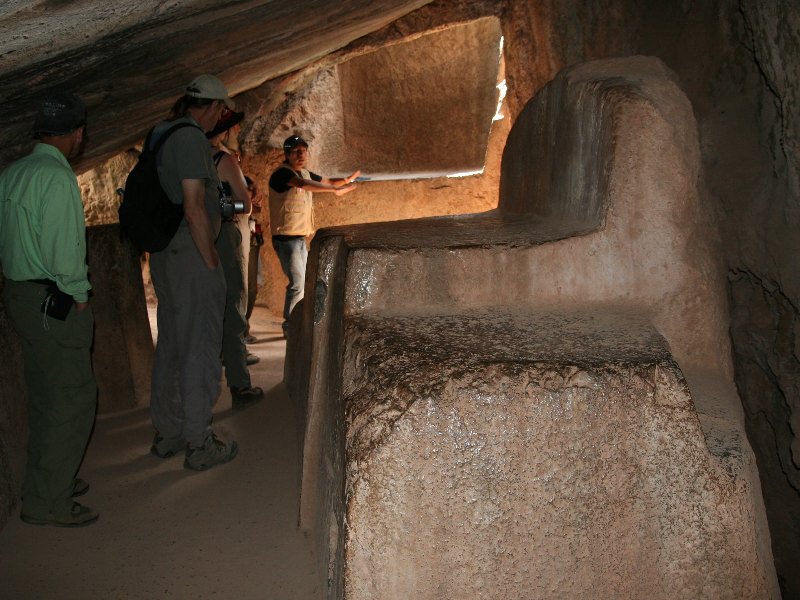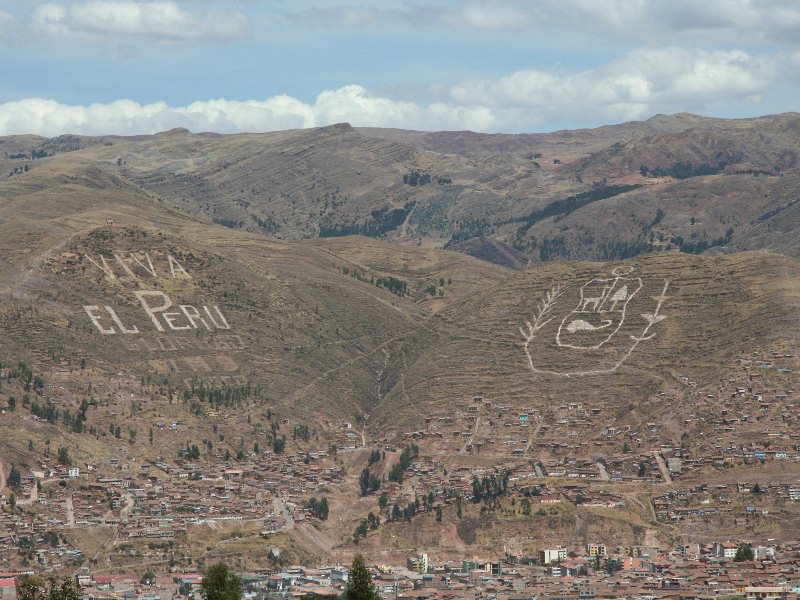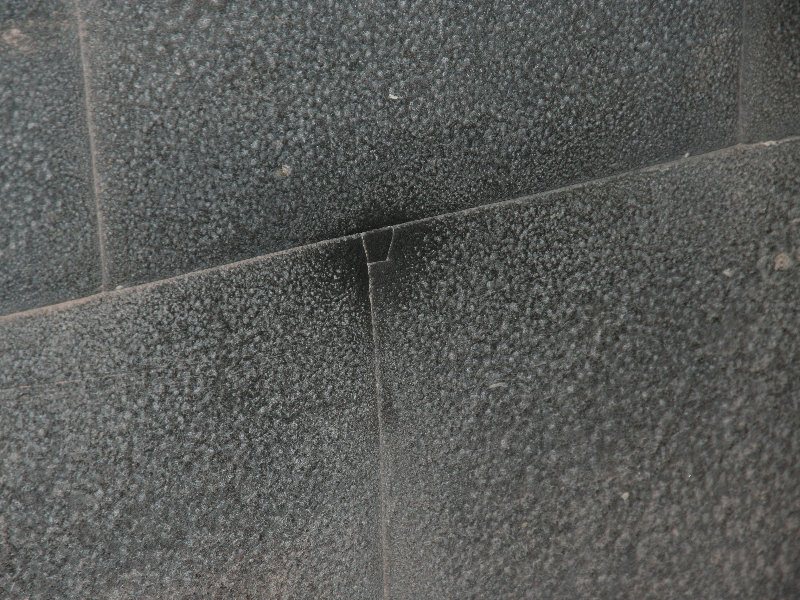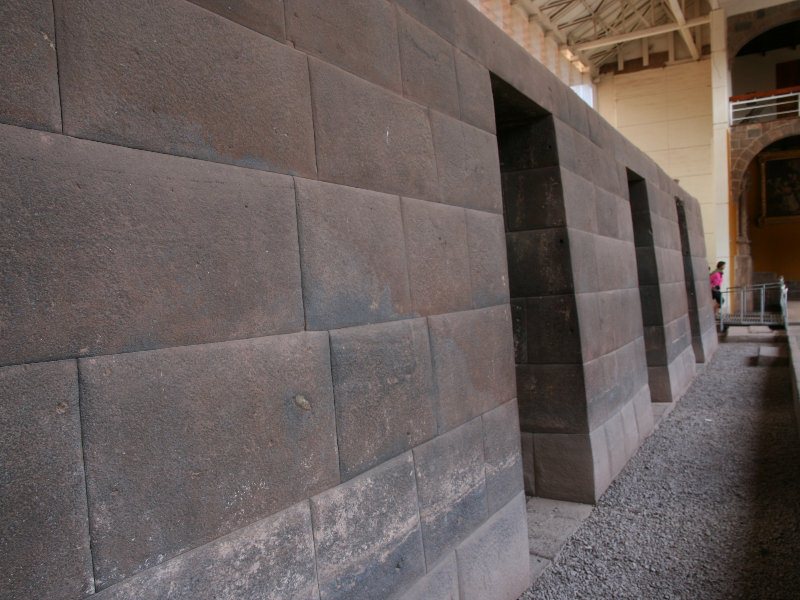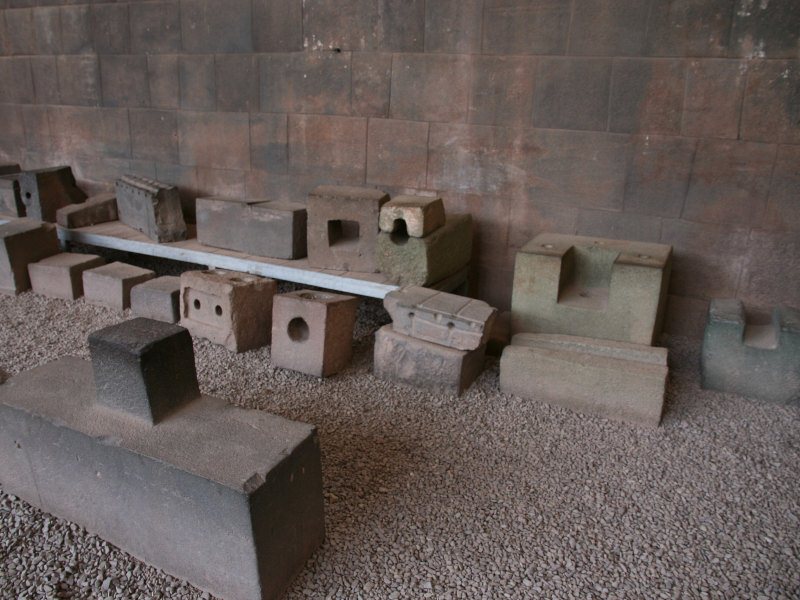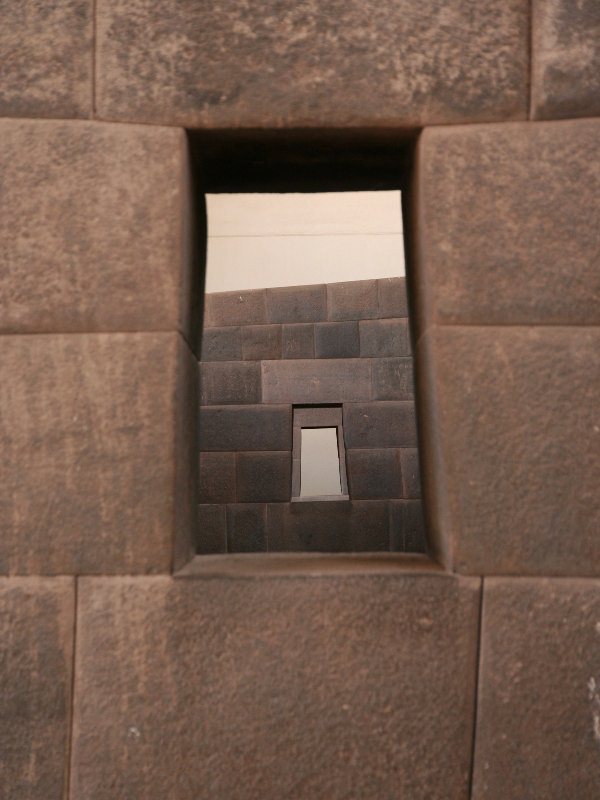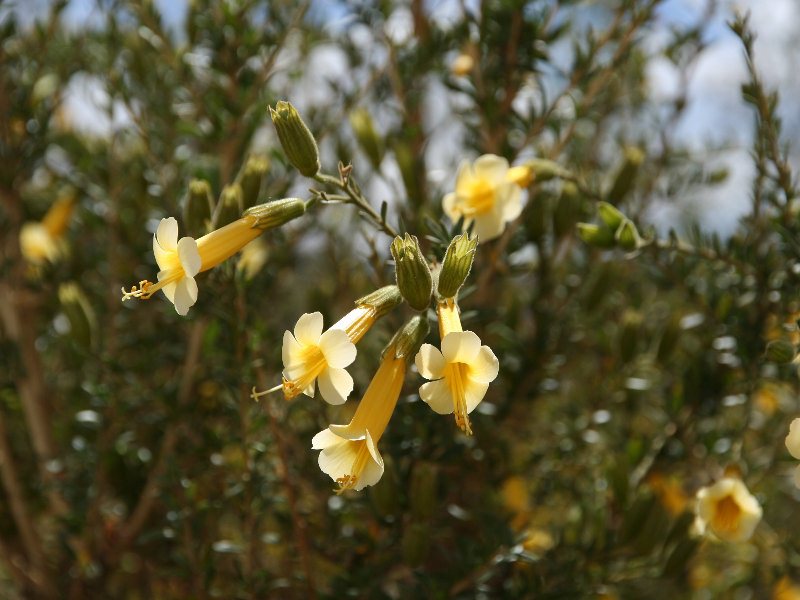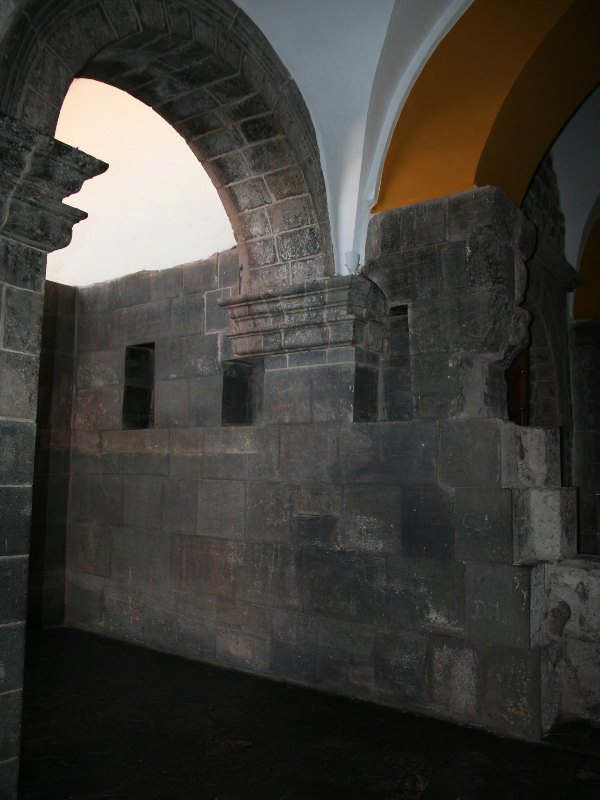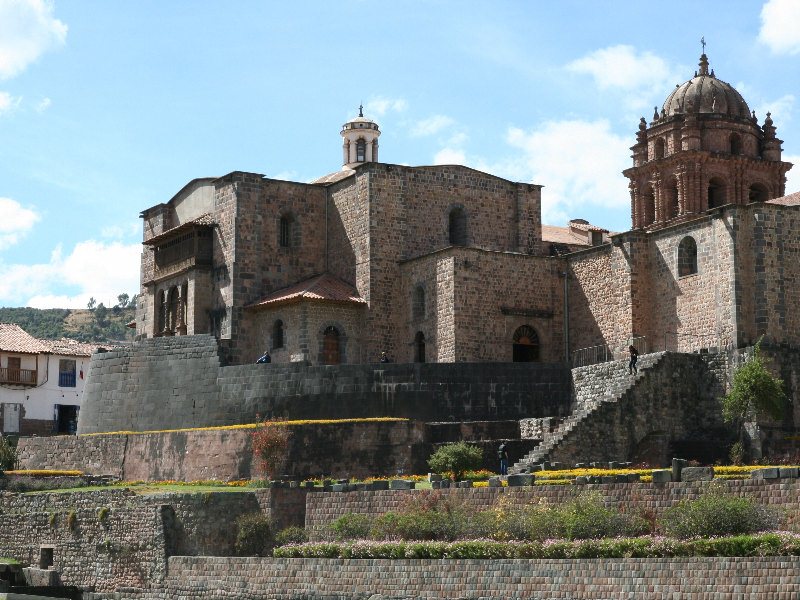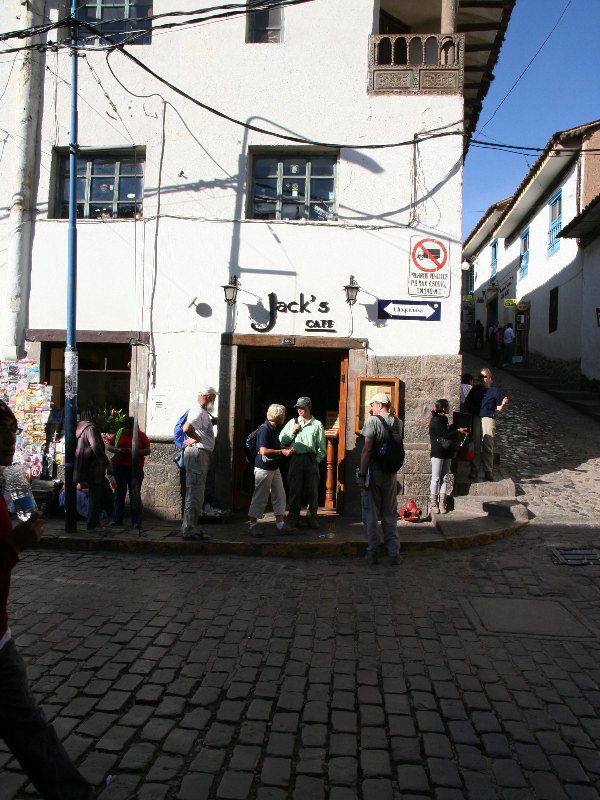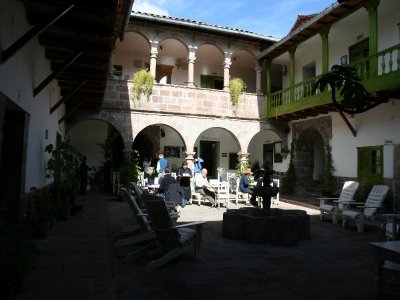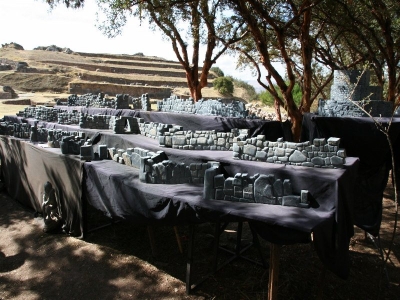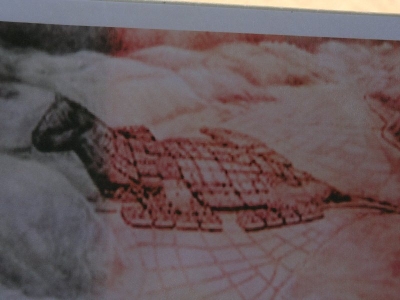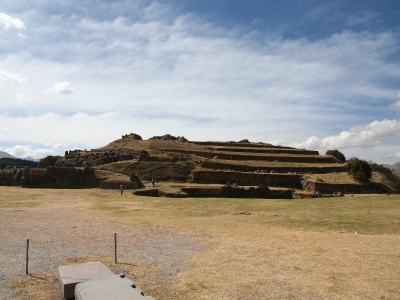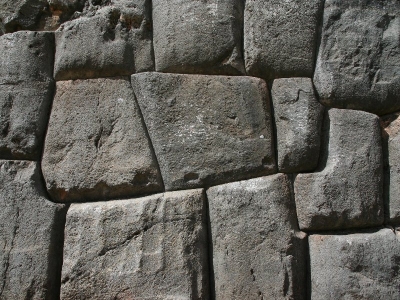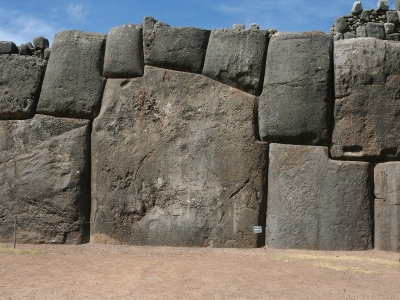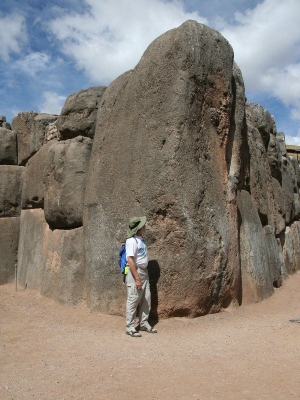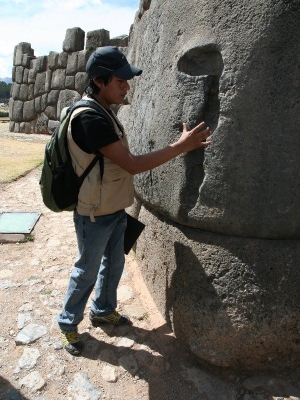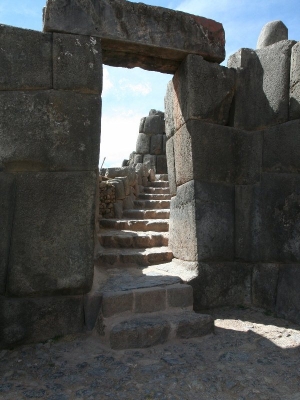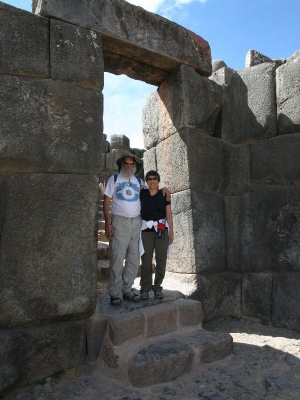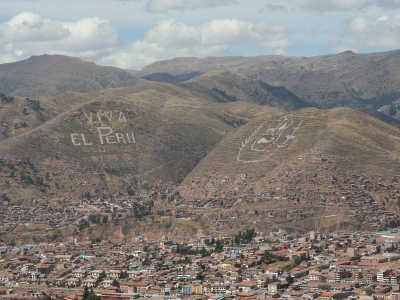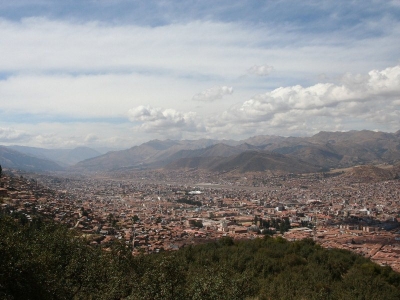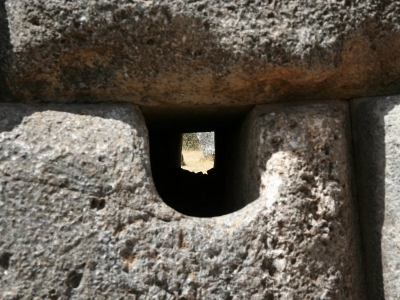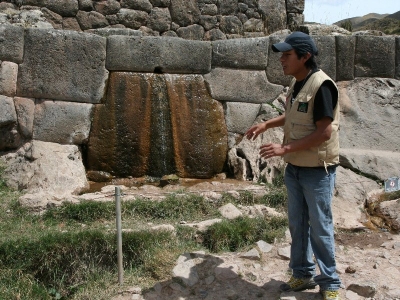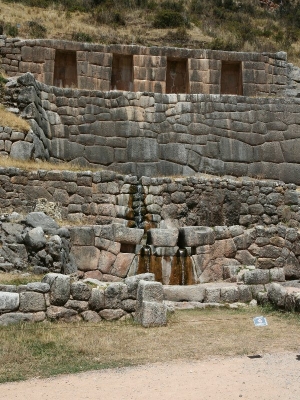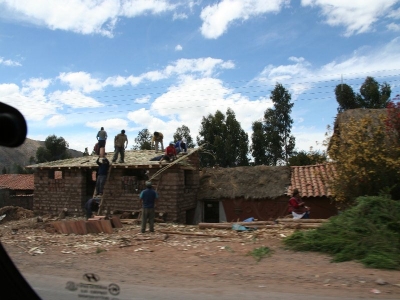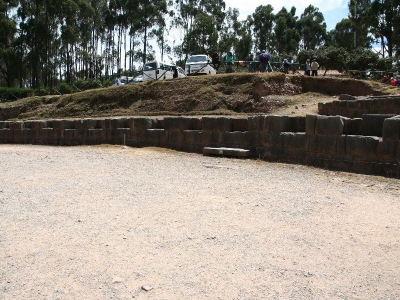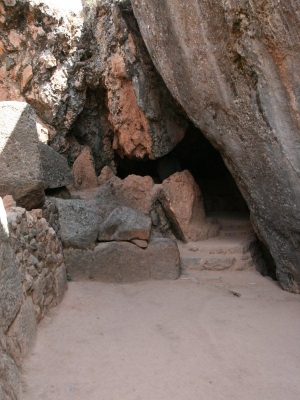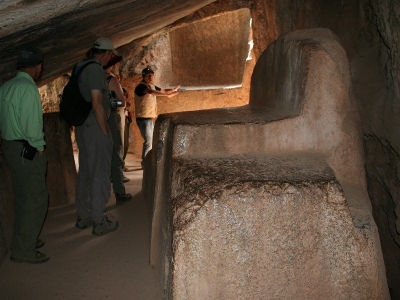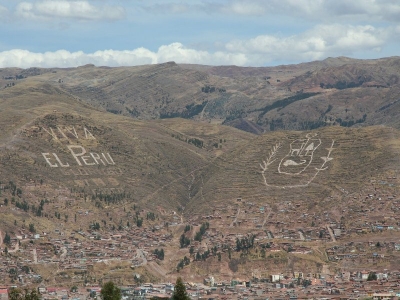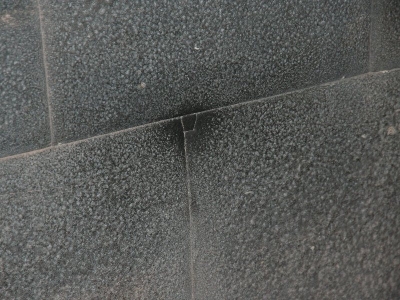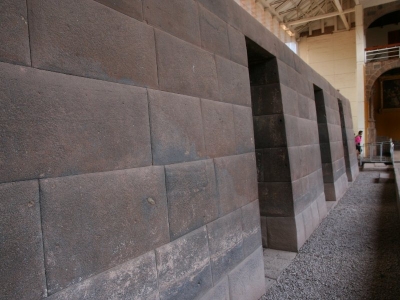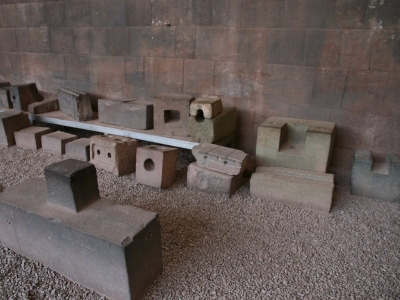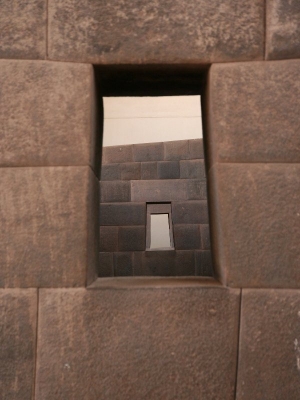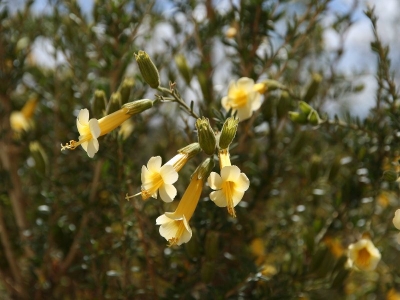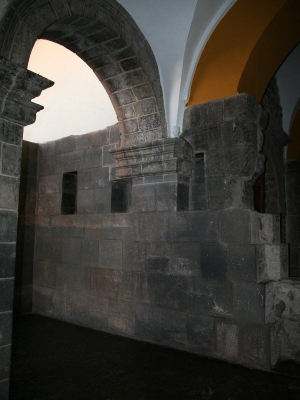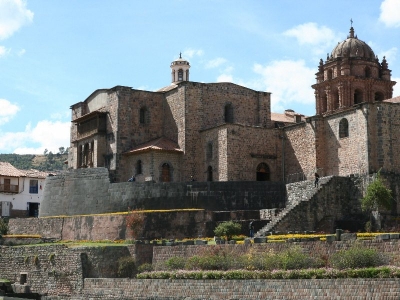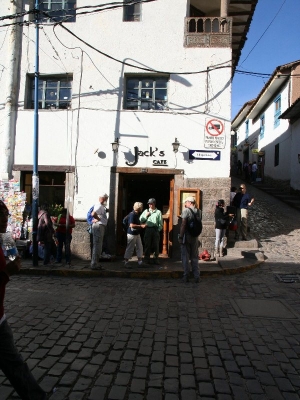-
Day 13: Ruins Around Cusco
It was a luxuriously late start today. That meant that just before we left, the sun was shining in the courtyard of our hotel, so I got a shot. After breakfast, Gwenn and I sat at a table in the sun for a while and read, so it was a good start for the day.
Our goal for today was to visit several smaller ruins sites around Cusco. They were apparently all part of the area called Saqsaywaman (which, when Raleigh first mentioned it to us, sounded like “sexy woman”). The model replicates the stones in the walls. The sort-of animal picture with the gray head is actually representing the city of Cusco (the body) with the Saqsaywaman area in gray at the left representing the head of the jaguar.
Since Cusco was the capital of Peru in Inca times, there were lots of these kinds of structures around. When the Spaniards came, they saw an easy source of building stone in these areas, so they just blew them apart and carted off the stones to build churches and such. That means that all we have left is the base of many of them.
The gray stone-shot shows a building technique. In the center you can see a set of three stones. The ones on the left and right have rounded bottom corners. This was a way of anchoring this set together so it would be less likely to move during an earthquake. Ingenious.
The next shot of a big gray stone in the center is the largest stone in the area today. If I remember right, it’s estimated to weigh 123 tons. Whew! Kip is standing by another big stone. This is a corner, and all the stones in the corners are large.
Raleigh is showing an indentation that is in the shape of a snake. He says there would have been a snake made out of gold in this area, because this was most likely a sacred site.
You can see the height of the entry door. This one is that tall because the Inca royalty would have been carried on the shoulders of porters. The height of the door meant they would not have to have gotten down from their chairs in order to pass through.
The top is very bare now, because as I said, the Spanish made off with all the stones. There is a great view of Cusco city from the top, though, including the carvings in the mountainsides. The next shot is to the left of those mountains and if you look closely, you should be able to see the airport–that long gray strip just below the mountain.
On the way down from here, I noticed an opening through two layers of wall. Raleigh speculated it was for drainage but I’m not so sure as it appears to drain into the city instead of away from it. I thought it might be a place where messages could be passed, without someone coming into the temple area itself. This is not the only one, although it appears to be one of the largest, so its purpose is still up for speculation, I guess.
After a short drive, we were at the next site, Tambomachay. There isn’t much to this one. It’s an area protected on three sides by natural hills. The fourth, the long sloping entry, is a not unpleasant walk. Just before turning left, there’s a spring where apparently pre-washing was done, or perhaps all water for those who were not royal or priestly enough to enter the site.
The site itself now consists mostly of several levels of rock with fountains fed by natural springs. The niches in the top level were where mummies would have been placed.
The next site was Pukapukara. This was very close to Tambomachay and may have been a sentry spot or served some other purpose for the royal temple. Here we didn’t even get out because not a lot is left–the stones again having been taken by the Spanish (and other locals, perhaps) to construct other buildings.
Along the road we found some construction going on. A roof was being thatched. I did a quick point-and-shoot and got a decent shot showing a bunch of men on the roof of the house.
The next site was Patallaqta. It appears that this is where the process of mummification went on, in a natural cave enhanced by the Inca. The niches in the rocks around it were possibly for mummies or maybe icons, idols, or just decorations. No one knows.
In the cave, you can see the first “bed” where the body was prepared by removing internal organs and having ointments applied to keep the skin from deteriorating. The next areas were for other stages of the process. What’s unique about this cave is how cool and airy it is. Perfect conditions for the work that went on here.
Our last site today was Qorikancha. Now, this is a Catholic church built on a particularly fine Inca stone foundation. The picture showing a dark area in the middle of it is the smallest stone in the structure. There had apparently been some damage to a corner of the stone and a very small one was fashioned to fill the hole. It’s dark because people keep touching it!
You can see how beautiful the precision joinery and engineering is. The walls cant back at an angle to resist earthquake damage. The shot with stones with holes of various shapes in them show the various ways the stones were joined together. Each one was unique, fashioned for the particular occasion. Amazing.
The picture through the window is actually a straight shot through three windows in this structure, all lined up.
In the garden, I took a couple of flower pictures. The one of some yellow flowers came out particularly fine, so I’ve included it here.
The picture right after that, if you look closely, shows a perfect example of how the church was built on the Inca foundation. And it’s funny that the “superior” civilization couldn’t replicate the fine stonework of the Inca. Their areas are very recognizable, and they look pretty clunky and sloppy in comparison.
The outside picture of the church is the one we had just been in. Notice the dark gray Inca wall around the bottom left. Better craftsmanship, which probably pissed the Spaniards off no end.
Our last official stop of the day was a highly recommended restaurant–Jack’s Cafe. Doesn’t look like much on the outside, in the Peruvian tradition, but the food was mostly American type and it was just fabulous!
After lunch we walked around town a little more, some members of the group going off on their own, and we finally all made it back to the hotel. Steve had mentioned a dance performance that sounded interesting to me. It’s apparently presented every night, so everyone but Gwenn and I decided to go another night. Since it’s my last night here, Gwenn was good to keep me company, and to keep us from getting lost on the way, Steve walked us there.
It was a fun performance of dances from various areas around Peru, complete with spectacular costumes. It seemed about at the level of a high-school production, but every seat in the place was full and I think everyone enjoyed it. I know I did.
And then…we got lost on the way back to the hotel. But with a couple of helpful strangers and a little street sense, we finally saw the hotel sign and it was a lovely site.
So this is my last post from Peru. I’ll write another in the next few days with some other impressions. We’ve done so much so fast it’s just hard to process it all! I have a very long layover in Lima before catching the plane to Fort Lauderdale and then home. I’m not looking forward to that much, but I am looking forward to getting back home. I miss my kitties and friends and public bathrooms with toilet paper and….
Thanks for the nice comments people have put on or reported about this blog. I hope you’ve enjoyed staying in touch with what’s been happening with the trip. Until later!
